Sony RX1R III Review: Was This Worth Waiting Nearly 10 Years For?
The Sony RX1R II was such a unique product for its time, offering high resolution mated to a stunning Zeiss lens, all in a compact size. However, it was always a premium product that demanded an exorbitant price. The RX1R II debuted at around $3,300, and let’s keep in mind that was nine years ago.
It’s been a long wait, but now Sony has decided to revive a line of cameras that most thought was long dead. The Sony RX1R III is out, and its $5,100 asking price is causing hearts around the world to skip a beat or two. Make no mistake, this is a pricey camera, but if we adjust for inflation and consider the new tariff costs, it is pretty closely in line with its predecessor.
So time has brought a higher price, but surely the last nine years have also brought astounding innovations that make this camera better than ever, and easily worth it, right? That is the $5,100 question I sought to answer as I carried it around Calgary.
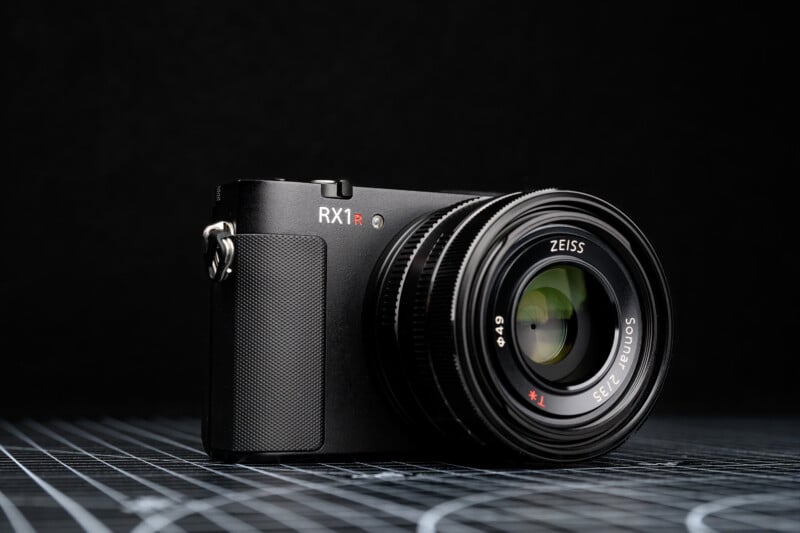
Sony RX1R III Review: How It Feels
What makes the Sony RX1 series of cameras so popular is the compact nature of the minimalist design while still housing a full-frame sensor. In the past, it was this camera and the Leica Q series that were creating quite a stir because of this. Sony has decided to keep the camera design true to its predecessors, and although I wouldn’t call these cameras pocketable, they are very convenient hanging off the shoulder for a day of street shooting.
The RX1R III combines the latest 60-megapixel full-frame sensor with the same 35mm f/2 lens that has been a part of this series since the original RX1. This was always a fantastic lens on the previous models, but I was curious to see if it could still hold up to the demands of the 60-megapixel chip. More on that below.
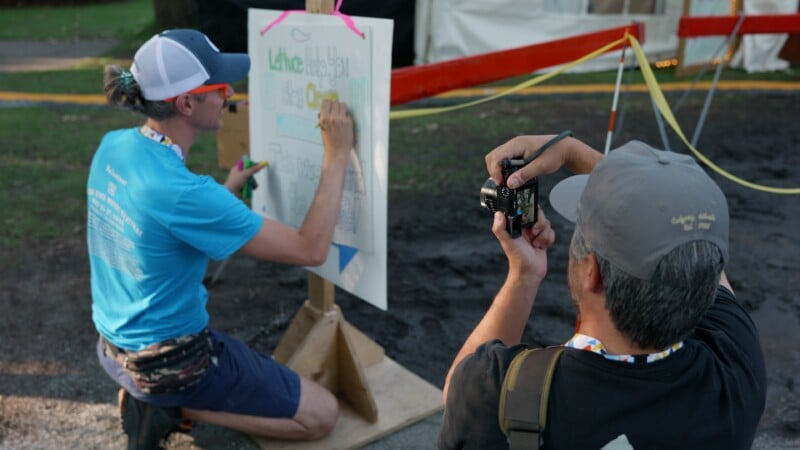
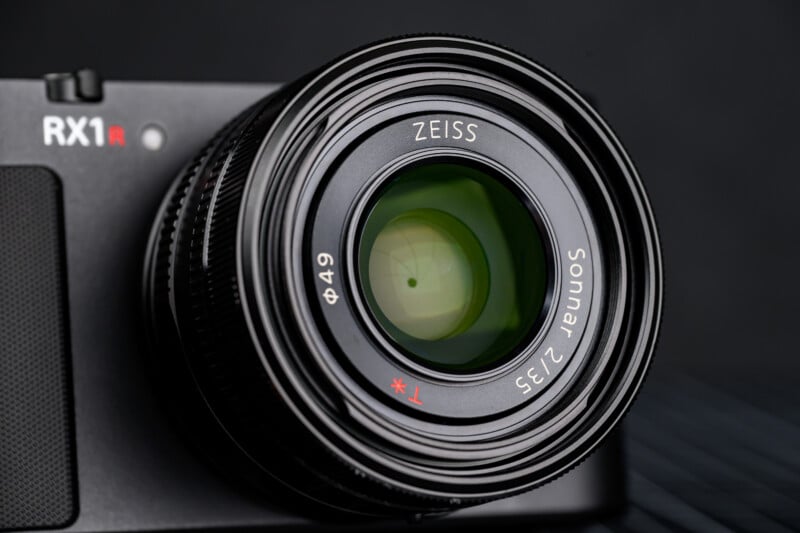

We have a slight change to the body finish with a stippled matte paint instead of the glossy black. This does make the camera appear to be made of plastic, but it is absolutely the same metal chassis design from before. Unfortunately, it also has the same lack of weather sealing as before, too, and I feel like this is something that could have been upgraded this time around. The weight is roughly the same as before, though, coming in at a very convenient 17.5 ounces (496 grams).
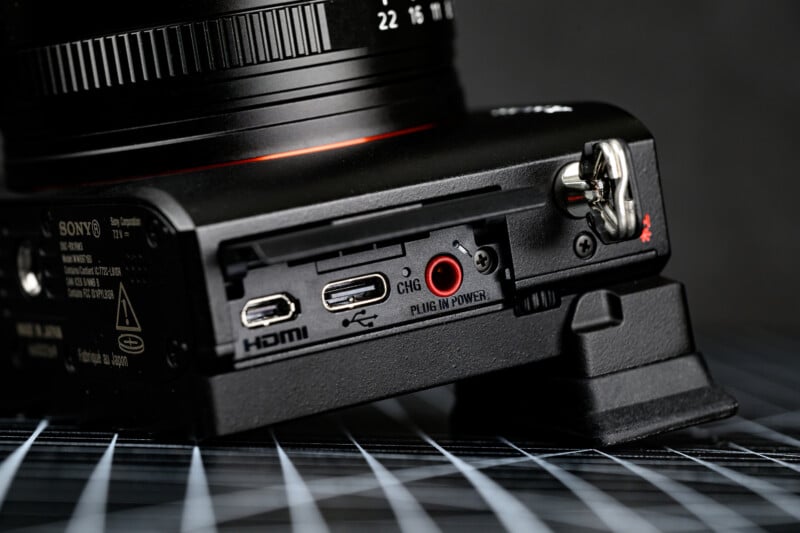
I’ve always liked the manual controls on the RX1 cameras because, as simple as they are, all you need is a mode dial, exposure compensation, and a dial for shutter speeds. Aperture is handled via the ring on the 35mm f/2 Sonnar lens, so you have full manual control at your fingertips. In the last nine years, the Sony menus have vastly improved as well, so that added convenience is very much appreciated.
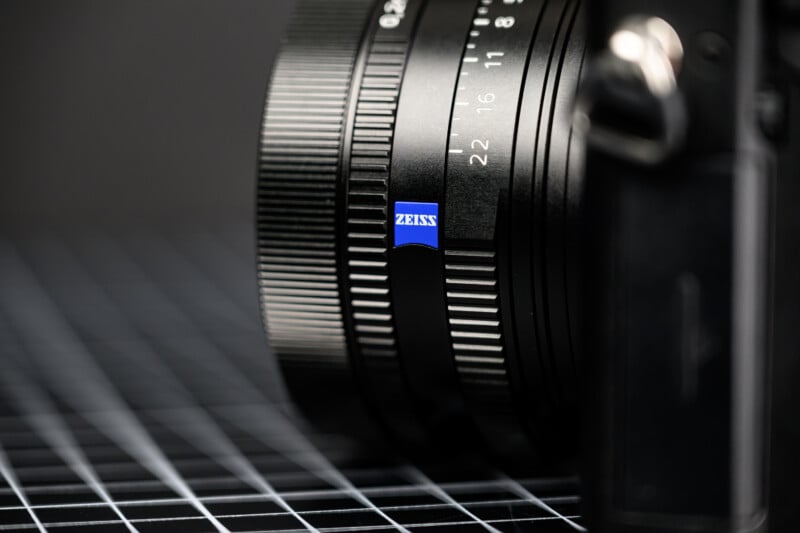
The RX1R II had an autofocus mode dial on the bottom front of the camera, and on this new model, that has been omitted. I wish there were a picture profile dial or something similar to make use of that real estate because what Sony did is leave us with just a blank spot.
The shutter button is still threaded for cable releases, and there are plenty of customizable buttons to set as well. I found myself quite annoyed by the soft-touch of many of these buttons, though, which is to say that the feedback when pressing them is strange to me, and I often second-guessed if I even pressed the button or not.
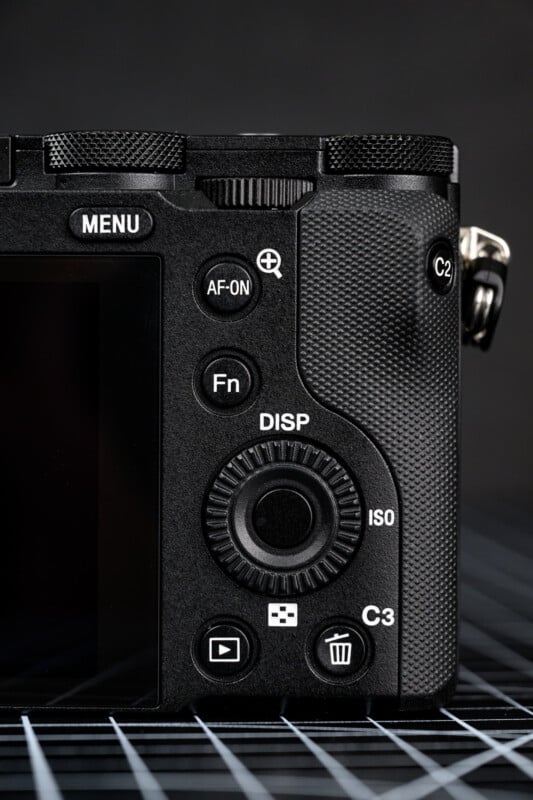
A 2.36-million-dot EVF returns to the RX1R III, which is now positioned at the top left of the camera. The previous version had a pop-up EVF, which worked fine, but was an extra step to deploy and had lots of moving parts as well. I like the new fixed EVF, but the entry-level resolution seems out of place on such an expensive body. My guess is that Sony has lots of similar units from the a6700 and a7C II cameras, so it was simple to modify one of those. However, a premium camera should come with a premium display.

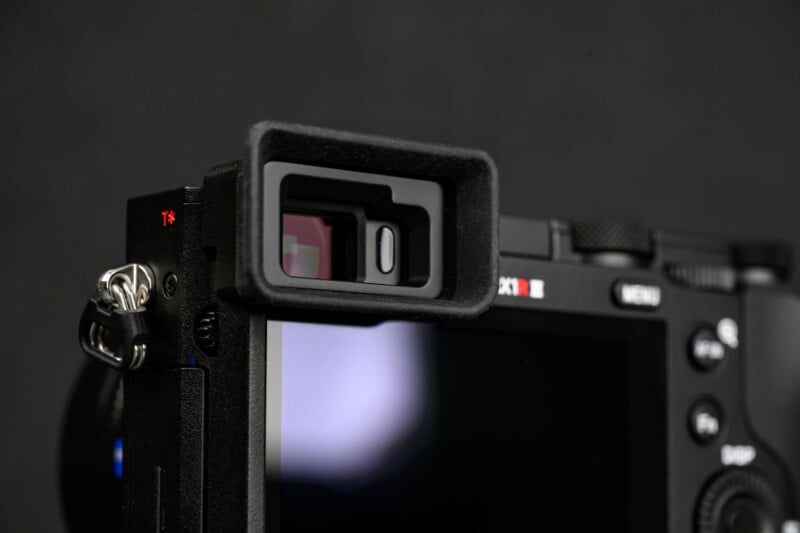
The back panel features an incredibly high 2.36-million-dot resolution, which is certainly a pleasure to look at. However, the screen doesn’t have any articulation or tilt, unlike the previous model. This is going to be a polarizing loss to many prospective buyers, especially because having a waist-level viewpoint is always nice for candid street shots. I would at least want the screen to tilt up and down, so I think this is a notable loss.
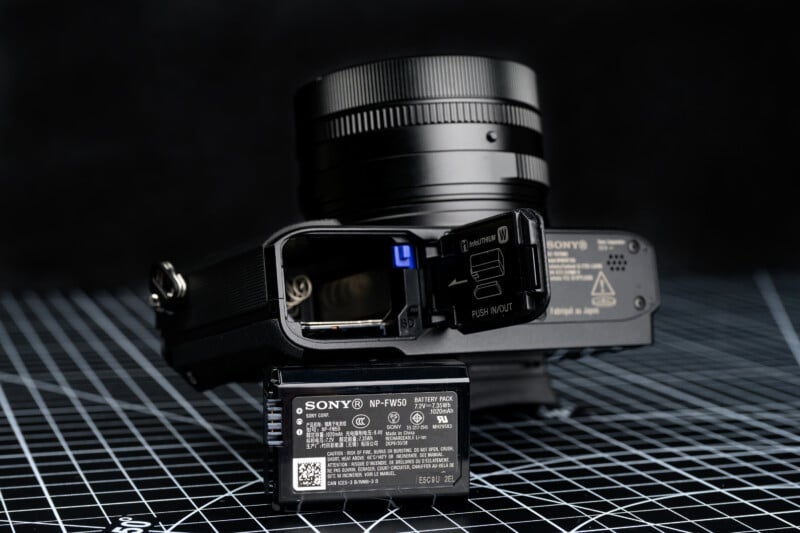
On the other side of that, though, what I love about the new screen is something we take for granted nowadays: the screen offers full touch control, which makes the RX1R III far nicer to control and adjust than before. You can swipe left and right to bring up touch functionality or swipe upward to activate the full quick menu. I especially enjoy the option to move my focusing point around without having to use the joypad.
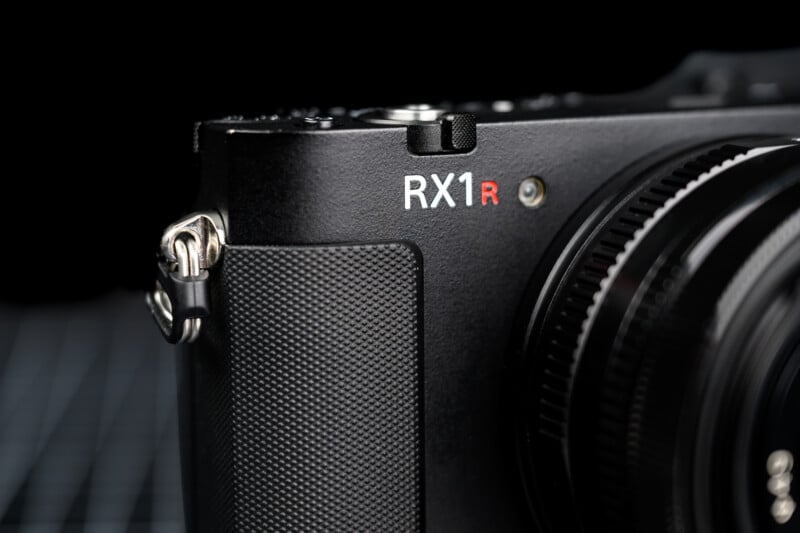
There is one single UHS-II SD card slot, which I think is appropriate for this style of camera. The big upgrade is a change in battery type to the much larger W-series Sony batteries, which increases battery life substantially. The battery life in previous models was a very poor 220 CIPA-rated shots, and this has been improved to about 330 shots.
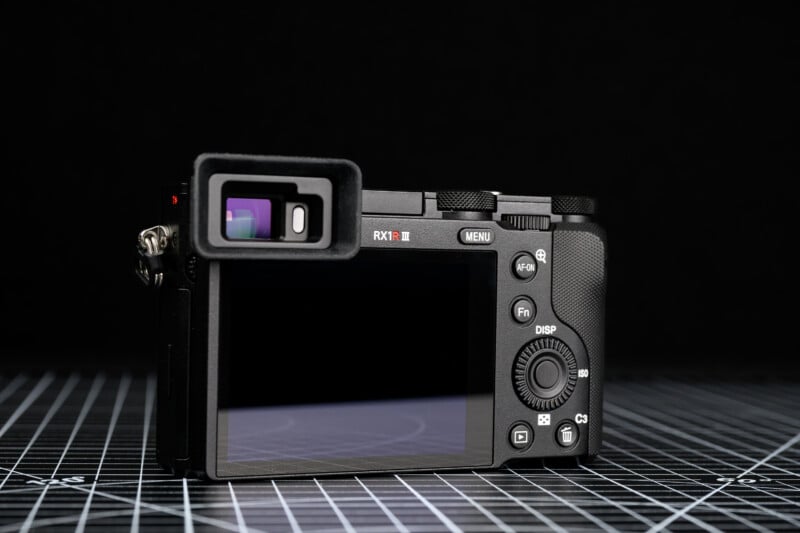
Sony RX1R III Review: How It Shoots
The big question is how an excellent, but still nine-year-old, optical design will handle the much higher resolution sensor. Luckily, it does pretty well, but it’s not perfect.
I tested sharpness and was very impressed by the detail retained in the center of the image at f/2. Stopping down to f/4 helped with contrast a little, and it is a testament to this Zeiss lens to be able to handle the full resolution of the sensor. However, corner sharpness is lacking a little, just as it was on the previous models. At f/2, the corners look pretty soft, and they do improve substantially when stopped down to f/4. I still feel like an even tighter aperture would be needed to really maximize overall performance.
I do love the extra resolution that the 60-megapixel sensor provides, and just like the Leica Q3 series of cameras, the RX1R III can make use of the extra detail to provide cropping modes. You can shoot a 50mm full-frame field of view as well as a tighter 70mm field of view, and still have a decent 29 or 15 megapixel file, respectively.



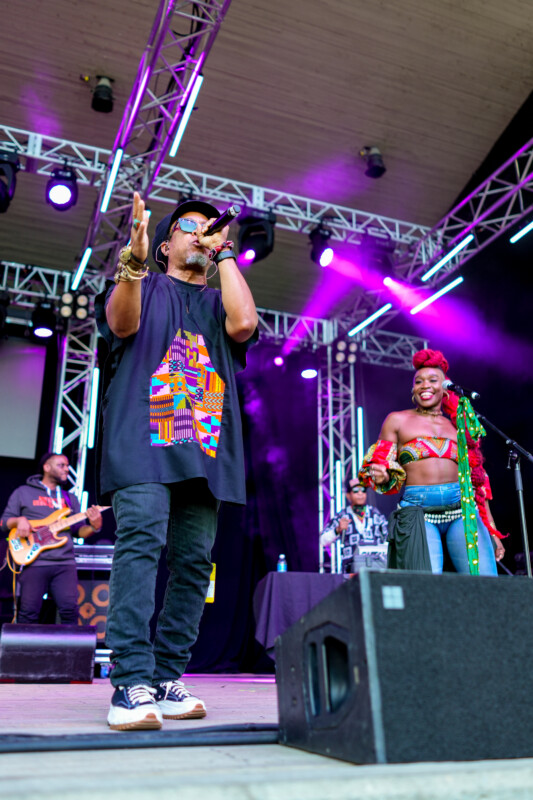
![]()
Flare is also an issue. While great contrast is maintained, there is a lot of ghosting, even at the widest of apertures. Stopping the lens down creates vivid reflections opposite the source of light, and it is quite noticeable. Sunstars are also very bland-looking, although this isn’t a major consideration on a 35mm focal length. I also noticed some LoCA, or longitudinal chromatic aberration, causing a slight color cast in the out-of-focus areas. It’s pretty minor, so I was not overly concerned with the result.

![]()
I actually love the bokeh on this old lens formula, even if highlights have a little bit of schmutz going on. There is a bit of a soap bubble effect, and specular highlights have onion rings visible, too. However, for whatever reason and despite these issues, the backgrounds don’t appear to be very harsh-looking. Transitions in focus are smooth, and the look is quite pleasant. There is a polygonal shape to the bokeh, and the lens exhibits a little bit of character, but I think the images look great.
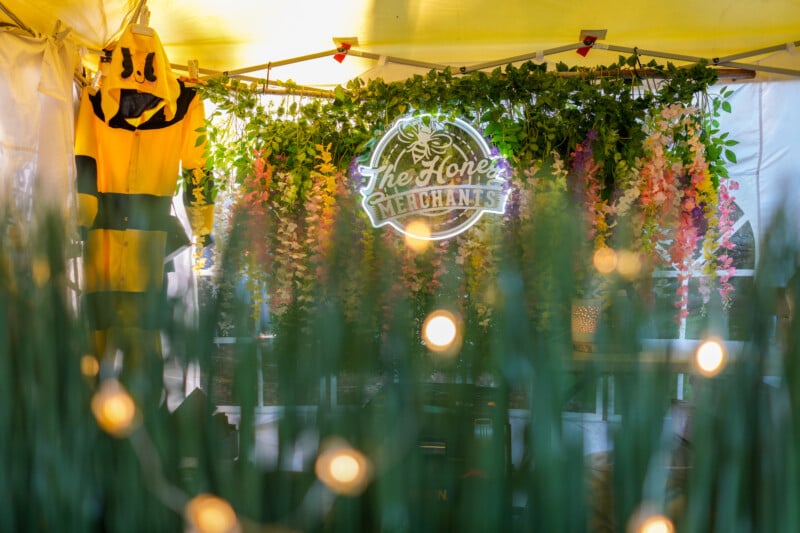
![]()
![]()
The predecessor to this camera had real issues when it came to autofocusing speed, often lagging behind the action. I assumed this would still be the case given the same lens being used, but the RX1R III is a very fast focuser. It seems that the older algorithms were the issue and not the focusing motors of the lens itself.
Autofocus is one of the biggest improvements here by far. The RX1R III has all the latest subject detection modes from Sony, along with the AI-focus processing chip seen in its other high-end bodies. I found myself shooting effortless portraits on the street and then switching to insect detect for some close-up macro shots. Everything worked quickly and reliably. Having the touch screen to move the focusing point was also a nice convenience.
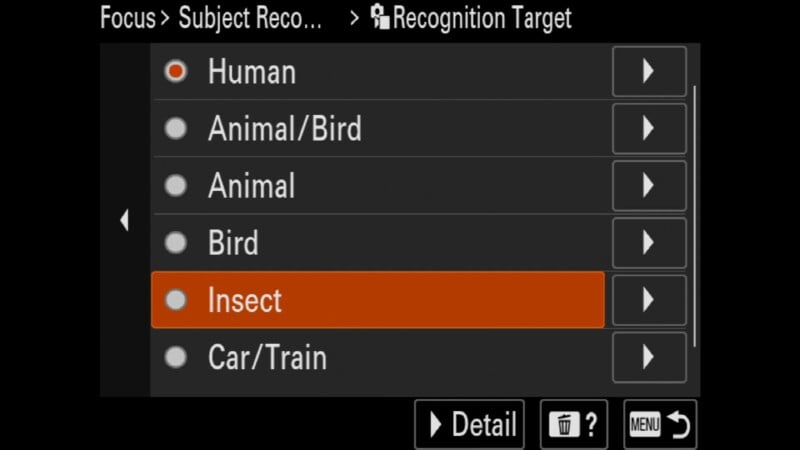

![]()
![]()
On the subject of close-up shots, the RX1R III has the same macro mode on the lens, which allows for shots closer than 0.3 meters. This is not a high magnification lens by any stretch, but you can get some nice detail shots, and the shallow depth of field really shows off the pleasant bokeh of this lens. Unfortunately, the complete lack of image stabilization means higher shutter speeds have to be used and extra care has to be taken to prevent blurry shots. The leaf-shutter lens does assist in mitigating some of the vibration and movement in the camera, and allows for shutter speeds up to 1/4000 second. You can also shoot flash photography at any of the shutter speeds without concern for sync speed issues. Personally, I would avoid the electronic shutter on this camera because the slower scanning 60-megapixel chip causes a fair amount of rolling shutter.
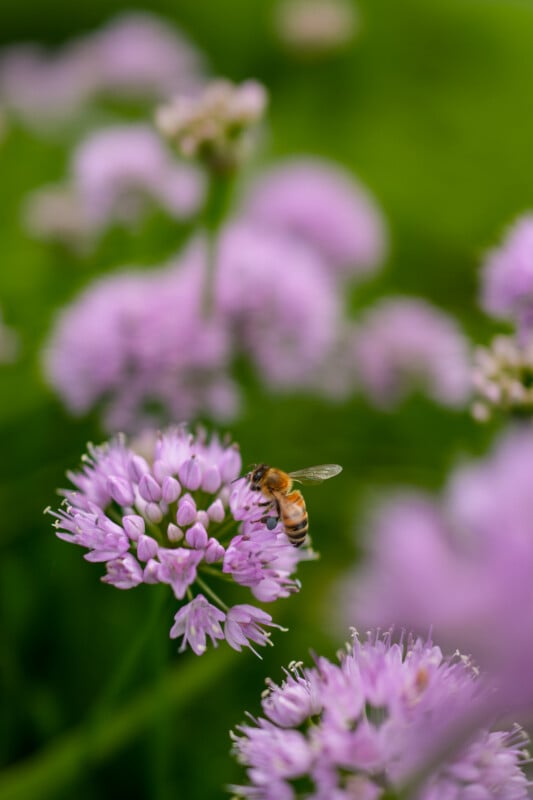
Picture profiles are all the rage nowadays, and Sony has added two more modes labelled “Film 2” and “Film 3” to the mix. These are borrowed profiles from the FX3 camera line, and basically give a muted saturation with a slight cyan cast to the overall look. In total, the camera now has twelve picture profiles to choose from and six custom options, allowing you to make your own customizations.
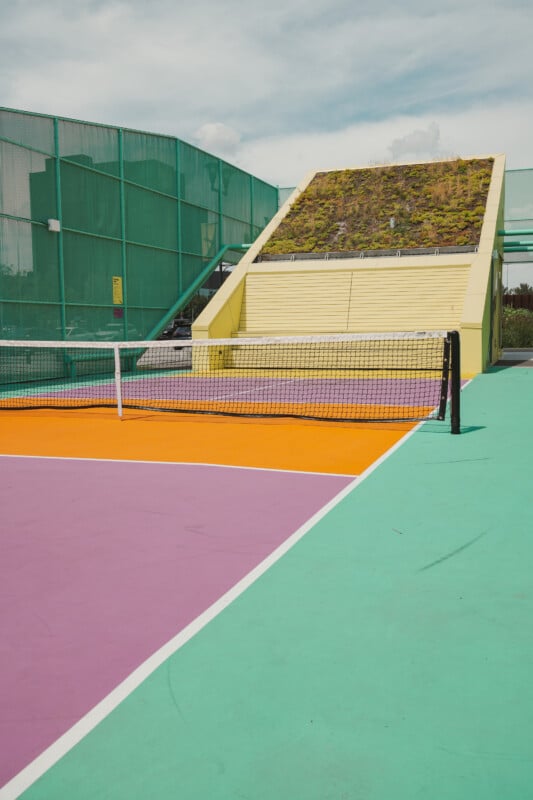
![]()
![]()
Video was never the forte of the RX1 camera line, but you now get 4K resolution video because, well, it’s been nine years. This is only supported up to 30 frames per second, and there is some loss of detail because the 60-megapixel sensor has to line skip or bin the files a little bit. 1080p footage can go up to 120 frames per second if you want to do a little bit of slow-motion video. The autofocusing is substantially improved, and the video quality is certainly a major step-up from before. You also have access to the S-Cinetone color profile or SLog3 for maximum grading potential. However, the intention of the video mode is largely the same as it was before. To be a casual-use, family or social media kind of camera, as opposed to a video camera with serious chops.

Sony RX1R III Review: Not Enough Has Changed
My main feeling that I am left with after having used the RX1R III is that nothing has really changed — or at least, not enough has, for better or for worse. Everything fun about the RX1R II is still super fun here. Everything that was convenient about the RX1R II is convenient here, too.
Everything that was expensive about the RX1R II has returned in force.
Some of the frustrations about the RX1R II are still frustrating. In nine years, we have seen arguably only two major changes. The autofocusing experience is way better, and the sensor is even higher resolution. Honestly, we didn’t really need more resolution. We needed a better EVF, a screen that still articulates, and an updated lens assembly that supports image stabilization. The Sony 60-megapixel sensor debuted in 2019, and if this camera had been released at that time, three years after the RX1R II, I would have said, “Yes, that makes sense.”
In 2025, it feels like a nostalgic blast from the past with some nice but minor quality-of-life improvements. That said, for almost as many nice things that we gained, we lost others.
There is no denying that it is a fun and handy camera to carry around, with the power to take some great images. This camera doesn’t fall far from the 2016 camera bag, and whether you will justify the $5,100 cost depends on how much you really pined for that RX1R II experience back in the day and how much more resolution really means to you.
Are There Alternatives?
The Leica Q3 is the obvious choice given that both cameras attempt to deliver the same experience. The Leica Q3 is vastly more expensive but offers a better lens, image stabilization, and a nicer display setup.
The Fujifilm GFX 100RF camera is slightly more affordable and gives you a powerful 100-megapixel sensor, nicer displays, and beautiful image quality. And hey, it doesn’t have in-body image stabilization either.
Should You Buy It?
Maybe. It doesn’t deliver amazing value for the dollar, and I think the upgrades should have been more substantial, but all the charm of the cameras that came before are carried forward in the RX1R III.
Image credits: Product Photographs by Erin Thomson